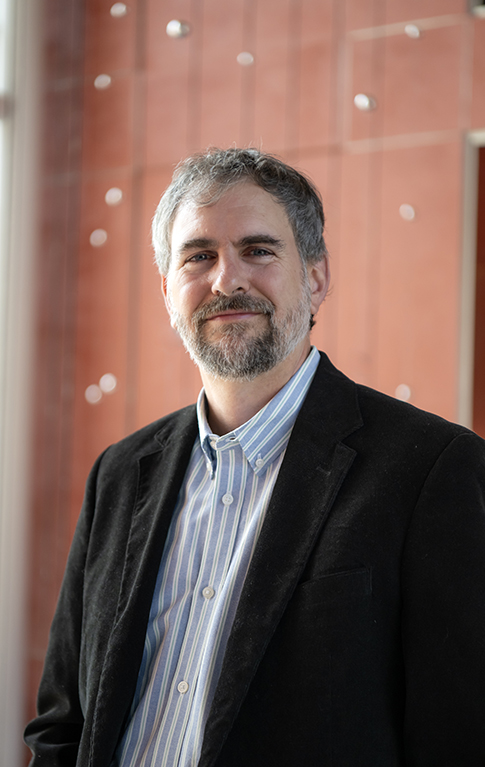Benjamin Tilghman
- Associate Professor • Chair of Art + Art History • Director of Arts Management and Entrepreneurship Minor

- 410-810-5776
- btilghman2FREEwashcoll
- Daly 215
Office Hours
TBD, also available by appointment
The interconnectedness of art is what motivates me in my teaching and scholarship. I majored in art history as an undergraduate because I was interested in so many things, and I realized that there is not a single area of human experience or scholarly inquiry that can't be approached through works of art.
I am particularly interested in how artworks serve as a tool of communication, how they serve to connect people across time and space, and how they can help us understand people's relationships with the natural world around them.
I am a deep believer in the moral and intellectual benefits of a liberal arts education, and always wanted to teach at a small school like Washington College. I have a lifelong connection to the Eastern Shore of Maryland, so it was literally a dream come true when I came to work here.
Education
- Ph.D. 2009 The Johns Hopkins University
- M.A. 2003 Williams College
- B.A. 1999 Lawrence University
Academic Expertise
- Medieval and Renaissance Art
- Islamic Art
- Environmental Humanities
- Public Art
In my teaching, my first priority is to instill the educational values that I believe to be at the core of the liberal arts philosophy: curiosity, interdisciplinary exchange, precise and creative thinking, respect for others, and the pure pleasure of inquiry and discovery. Alongside these values I try to help students develop the skills that will help them succeed in school and in their future as professionals and lifelong learners. Chief among these skills are active reading, precise writing, sophisticated research methods, and the development of rich and fruitful questions. Also important are those skills particularly crucial to the work of art history: careful and patient observation, an awareness of process and materials, an understanding of metaphor and symbolism, and the development of a delicate balance between intuitive and analytical thinking.
There is nothing like holding a medieval manuscript, knowing that your hands are touching the same pages that someone else turned centuries ago. Art history gives you the chance to travel into the past, while also learning more about yourself and your community in the present.
Additional Information
- 2017-2021 Assistant Professor of Art History, Washington College (MD)
- 2012-2017 Assistant Professor of Art History, Lawrence University (WI)
- 2007-2009 Zanvyl Krieger Curatorial Fellow, Dept. of Manuscripts and Rare Books, Walters Art Museum
- “Kufa and Kells: The Illuminated Word as Sign and Presence in the 7th-9th Centuries.” In Empires of Faith: Exploring Art in Religions across Eurasia during Late Antiquity, edited by Jás Elsner and Rachel Wood, 44-65. British Museum Press, 2021.
- “Script, Pseudoscript, and Pseudo-pseudoscript in the work of Filippo Lippi.” In Hidden Script: Writing Concealed in Plain Sight, edited by Stephen Houston and John Bodel, 100-25. Cambridge University Press, 2021.
- “Pattern, Process, and the Creation of Meaning in Insular Carpet Pages.” West 86th 24, no. 1 (Spring-Summer 2017): 3-28.
- “On the Enigmatic Nature of Things in Anglo-Saxon Art.” Different Visions, Special Issue: “Active Objects,” edited by Karen E. Overbey and Benjamin C. Tilghman, 4 (2014): 1-44.
- “The Shape of the Word: Extra-linguistic Meaning in Insular Display Lettering.” In “The Iconicity of Script,” special issue edited by Jeffrey Hamburger, Word & Image 27, no. 3 (2011): 292-308.
- Visiting Research Fellow, Institute for Advanced Studies in the Humanities, University of Edinburgh, Fall 2024
- International Center for Medieval Art-Samuel H. Kress Research Grant, 2019
- Excellent Teaching by an Early Career Faculty Member, Lawrence University, 2016
- “Best Lecture Series,” Baltimore City Paper (for organizing the History of Art Department Lecture Series), 2007
- Phi Beta Kappa, 1999
- Introduction to the History of Western Art
- Arts of the Islamic World
- Early Medieval Art
- Byzantine Art
- Gothic and Northern Renaissance Art
- Italian Renaissance Art
- Seminar: Medieval Illuminated Manuscripts
- Seminar: Thing Theory and Art
- Methods of Art History
- Supervised Tutorials on: Art & Materiality; Video
- Games as Art; Ecocritical Approaches to Textiles;
- The Medieval Book of Hours; William Blake